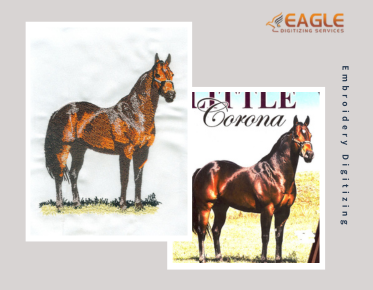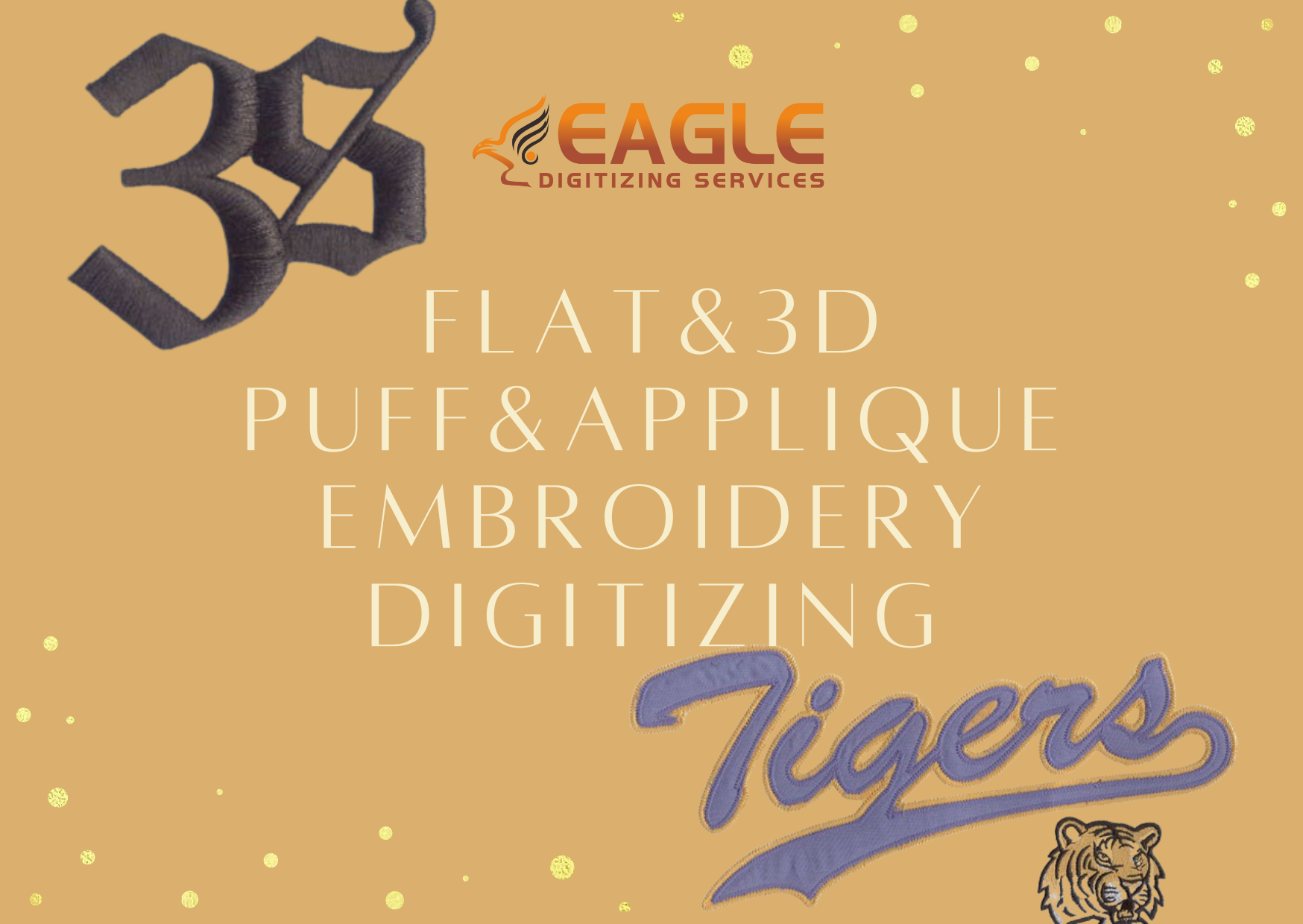How to Spot an Image Too Complex for Embroidery
Embroidery is a timeless craft, transforming fabric with intricate stitching to create beautiful, personal designs. But not every image is ideal for this delicate art form. The challenge often lies in understanding which images can translate effectively into stitches and which ones are simply too complex. Knowing the limits of what works in embroidery can save time, resources, and frustration.
Embroidery requires a careful balance
between detail and simplicity. While complexity can elevate a design in certain
mediums, it can make the process of embroidery unnecessarily difficult. In this
guide, we’ll explore how to spot an image too complex for embroidery and offer
practical tips for simplifying designs to achieve the best results.
The Art of Embroidery: A Brief Overview
Embroidery, a process of decorating
fabric with needle and thread, is one of the oldest forms of textile art. It
can range from simple monogramming to elaborate pictorial designs. While
technology has made the process easier with embroidery machines, it still
relies heavily on the principles of thread tension, stitch density, and fabric
texture.
Why Simplicity is Key in Embroidery Designs
Simplicity is not just an aesthetic
choice; it’s a necessity in embroidery. The more complex the design, the harder
it is to execute cleanly. Small details can be lost in translation, and
intricate patterns may become jumbled in the process of stitching. The key to
successful embroidery lies in clarity and boldness—traits that are often found
in simpler designs.
What Makes an Image Suitable for Embroidery?
The ideal embroidery
design can be easily translated into threads. Images with distinct
outlines, minimal shading, and bold shapes work best. The fewer elements an
image has, the easier it is to replicate with stitches. Ultimately, an
embroidery-ready image should be clear and easy to distinguish, even when
scaled down.
Common Embroidery Techniques and Their
Limitations
Different embroidery
techniques—such as satin stitching, running stitches, and appliqué—have
varying levels of flexibility. Some are great for solid, bold designs, while
others are better suited to softer, more subtle designs. However, techniques
like satin stitch may struggle to replicate fine details or intricate gradients
accurately.
Key Signs of an Image Too Complex for Embroidery
Too Many Fine Details
Fine details like small lines, intricate
patterns, or delicate elements are often lost in the embroidery process.
Because stitches are relatively broad compared to the thinness of a pencil line
or the fragility of a feather’s edge, these small details are not practical for
embroidery.
Excessive Colors and Gradients
Embroidery relies heavily on thread, and
each thread color adds to the complexity of the design. Excessive colors or
intricate gradient transitions may not be feasible, especially if the design
involves too many colors that are difficult to distinguish once stitched.
Gradients, in particular, don’t translate well into thread because of the
limitations in blending hues smoothly.
Intricate Text or Small Fonts
While text can be embroidered, extremely
small fonts or intricate text designs may not be readable once stitched.
Letters that are too fine or condensed can result in designs that are blurry or
illegible. For legibility and clarity, it’s essential to use bold and simple
fonts.
Fine Lines and Thin Shapes
Embroidery stitches are not as precise as digital lines or vectors. Fine lines or thin
shapes often become distorted or blurred when stitched. Thin details, like fine
hairlines or delicate borders, are particularly vulnerable to this distortion.
Large Areas of Solid Color
Solid color areas that are too large can
result in an unbalanced look. The sheer volume of thread needed can create a
“clumpy” effect, with the fabric becoming too dense or over-saturated with
stitches. Moreover, such areas are challenging to execute evenly, leading to
irregularities.
The Challenges of Working with Complex Images
Thread Count and Density Issues
Images with too much detail require more
threads, and a higher thread count can make the design too dense. This can
cause uneven stitching and affect the overall texture and appearance of the
design. Density issues may also cause the fabric to bunch up, distorting the
final product.
Stitch Type Limitations
Each embroidery technique has a specific
way of handling detail. Some methods, such as satin stitch, are better at
handling smoother lines, while others like cross-stitch or fill stitches are
more suited to larger, bolder designs. For fine details, no one stitch method
can handle all types of images without compromising the design’s integrity.
Image Resolution and Clarity
Embroidery machines rely on a digital
version of the image to create the stitch patterns. If the image is
low-resolution or unclear, it becomes difficult to translate the design into
precise stitches. Even slight pixelation in an image can result in a blurry or
jagged stitch output.
The Role of Embroidery Software
How Software Can Help Simplify Complex
Designs
Embroidery software can help convert complex images into a simpler version by automatically
adjusting the resolution, reducing the number of colors, and reworking certain
fine details into larger shapes. This software can also help adjust the stitch
count to ensure the final design is balanced and appropriate for stitching.
When to Use Vectorization to Simplify Images
Vectorization is a technique used to
convert raster images (like photographs) into scalable vector images. By doing
this, the image is simplified into clear lines and shapes that embroidery
machines can process more easily. It’s an essential tool for transforming
highly detailed images into embroidery-ready designs.
Simplifying an Image for Embroidery
Removing Unnecessary Details
Start by stripping the image down to its
core elements. Remove intricate details that will not translate well into
stitches, such as tiny textures or small facial features. Focus on the major
elements that will provide a clean, bold visual.
Reducing the Number of Colors
Too many colors complicate the embroidery
process. Reduce the color palette to a few distinct shades. Choose colors that
work harmoniously together and can be blended effectively using stitch
techniques such as gradient fills or shading.
Adjusting Font and Text Size
If your design includes text, make sure
it’s legible by increasing the font size and choosing simpler, bolder fonts.
Avoid intricate serifs and tiny fonts that might not hold up well in the final
stitched version.
Working with Larger Shapes and Bolder Lines
Switch out tiny, intricate shapes for
larger, more defined ones. Simplifying the design into broader forms will
ensure that the image stands out and doesn’t lose its clarity once stitched.
Common Pitfalls in Over-Complicated Embroidery Designs
Stitches That Don’t Hold
Complicated designs can result in
stitches that don’t hold properly, especially when using fine details. The more
intricate the design, the more likely it is that individual stitches will fray,
unravel, or break, leading to an incomplete or damaged image.
Design That Looks Messy or Inconsistent
When complex designs are stitched, the
result can often look inconsistent. Small details may blur together, and
intricate elements may appear muddled. This can make the entire design look
unprofessional.
Difficulty in Stitching Fine Details
Embroidery machines are great at
executing basic, bold patterns, but they struggle with very fine, intricate
details. When the design requires such precision, the stitching might not
capture the detail as well as expected.
Knowing When to Use a Different Technique
When to Choose Screen Printing Over
Embroidery
For designs that are too complex for
embroidery, screen printing may be a better option. It allows for more detailed
images and is ideal for large quantities, making it a good choice for detailed
logos or designs with many colors.
When Laser Cutting is a Better Alternative
Laser cutting can help with intricate
designs that would be impossible to stitch. If the design involves delicate
cuts or layered fabric, laser cutting provides an exact way to create detailed
shapes without compromising the quality.
Exploring Digital Printing as a Viable
Option
Digital printing, or direct-to-garment
printing (DTG), is perfect for designs with multiple colors or photographic
detail. It provides high resolution and color depth, offering an ideal solution
for complex images that can’t be effectively embroidered.
Best Practices for Choosing the Right Image
Keeping it Simple: Focus on Bold Shapes and
Clean Lines
For embroidery success, opt for images
that feature bold shapes and clean lines. The simpler and more graphic the
design, the easier it will be to replicate on fabric.
Choosing Designs with Balanced Contrast
A design with high contrast makes the
embroidery process much easier. The distinction between colors and shapes
allows the stitching to create a clear, crisp design.
Working with High-Resolution, Clean Images
Always use high-resolution images when
preparing an embroidery design. A sharp, clean
image will ensure that the details are preserved and accurately translated into
stitches.
Tips for Successful Embroidery Projects
Testing Your Design Before Full Production
Before committing to a large batch of
embroidery, always test the design on a scrap piece of fabric. This allows you
to catch any potential issues with the stitching before you move forward with
production.
Consulting with an Embroidery Specialist
If you’re unsure about the complexity of
a design, consulting with an experienced embroidery professional can provide
valuable insights. They can help you refine the design or offer suggestions on
simplifying it.
Knowing Your Fabric and Its Limits
Each type of fabric has its limitations.
Delicate fabrics may not hold detailed designs well, while sturdier fabrics
like denim can handle more complex stitching. Choose the right fabric for the
design you want to achieve.



